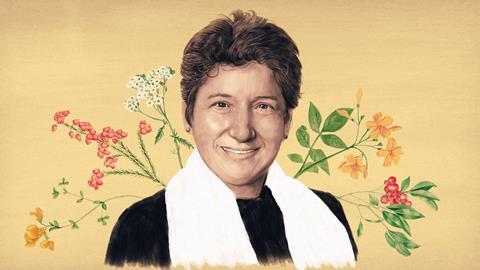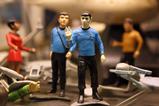The polymer expert on power imbalances and following her instinct
Julia Kornfield is the Elizabeth W Gilloon professor of chemical engineering at the California Institute of Technology in the US. Her group studies the macroscopic properties of polymers on a molecular level, aiming to create new functions for a range of applications from fuel safety to biomedicine. She was talking to Neil Withers at the 16th International Conference on Materials Chemistry (MC16) in Dublin, Ireland
When I went off to undergrad, I liked physics, chemistry and maths, but I had hoped to be a novelist, so I went to major in literature. But it turned out I wasn’t very good at it. Luckily, I was at Caltech where, in the 1980s, even a literature major had to take a year of chemistry and two years each of physics and maths. That is how I discovered that I’m not half bad at doing science.
In my career I’ve often followed an instinct about a person who I thought was inspiring. For example, in chemistry, I was inspired by Peter Dervan – the way he talked and thought about science. He was designing synthetic molecules that could touch in the grooves of DNA, and recognise a sequence of, say, six nucleotides out of a whole genome. He was always focused on the heart of the matter, ‘the take-home lesson’.
On the faculty at Caltech, one of my favourite research stories is the light adjustable lens (LAL) – a collaboration with Bob Grubbs and an eye surgeon at UC San Francisco named Dan Schwartz. Dan called me in 1997 for help with an ophthalmology problem involving polymers and optics, but I was hugely pregnant with my first kid and had no experience with polymers in the human body. Not a good time for me to start biomedical research. But Dan insisted and we did a brainstorming session with Bob.
Dan dreamed of an intraocular lens that could be optimised after the eye healed. Bob and I thought ‘Let’s do it with a photopolymer.’ In the first year, we only got 2% of the required effect, so we thought Dan would pull the plug. He kept us going, and within another year, we had data that attracted investors. It was the first clinical research I’d ever done, and the LAL made it to clinical approval. Cataract patients now have an option to optimise a lens in their specific eye, often getting good vision, at distance and near.
I want to convey to grad students how big an impact they have. I look back fondly on students who pushed me to do something I wasn’t inclined to do.
Gravitate toward work you think is beautiful and important
My talk at MC16 featured a wonderful student – a Greek Cypriot, Artemis Ailianou. She’d been doing gorgeous experiments on polyolefin crystallisation. But she comes in and says ‘I hate my project.’ So I have to listen and she says ‘I want to work on something where a small amount of polymer makes a big difference and never ends up in the environment.’ I was stumped. Then out of the blue, I get a phone call from a former postdoc, then at Abbott, asking if I could help understanding their bioresorbable scaffold—a poly-L-lactic acid (PLLA) alternative to a metal stent. It’s a tiny device – just 15mg of polymer – and it looks like jewel. It holds the coronary artery open long enough for the body to clear plaque, then is absorbed by the body. Just what Artemis asked for! If she hadn’t, I would have avoided working on PLLA. Instead, a long, fruitful collaboration ensued.
As a mentor, I struggle with being very strong willed. I talk over people. So one of the first things I tell students when they join my group is ‘The more vehemently I say something, the less you should believe it.’ I also tell them that if they can’t get a word in edgewise, just say ‘I wasn’t finished talking’ and repeat louder as needed until I listen.
The power imbalance can be horrible. Some PhD students suffer in silence, fearing they will never graduate and feeling their adviser is the only thing between them and freedom. I have seen it sometimes take years for my own students to tell me what they want. But I’m always grateful because the results are brilliant. Students have all kinds of creative insights that the faculty don’t have, precisely because they see the world differently.
My advice to young scientists is to use their PhD and postdoc time to get in touch with themselves – their scientific taste and values. Gravitate toward work that you think is beautiful and important. Look for mentors who are a good fit with you and who, as much as possible, you admire.
Out of the lab, for the past year, I’ve been obsessively digging weeds. I went to a symposium about the rhizosphere and now I love looking at the different roots and bugs in the soil. I got involved in a project led by Diane Newman, an environmental microbiologist. We are working on new ways to measure what’s going on in the soil, hoping to guide agriculture toward a lighter footprint. In my own yard, after five years of drought, I dug out the invasive plants down to a half metre, creating space for a nice little line of California natives – manzanita, monkey flower and yarrow – no fertiliser and little water required.


















1 Reader's comment